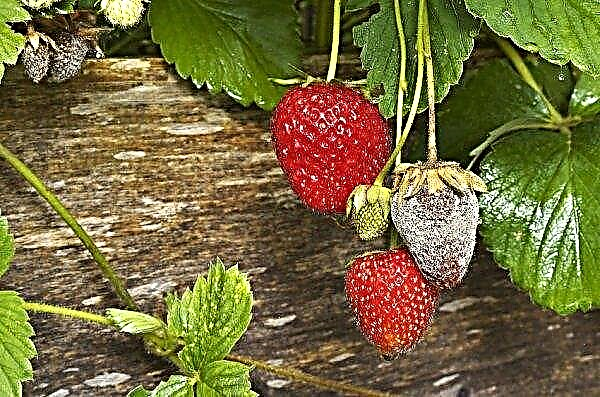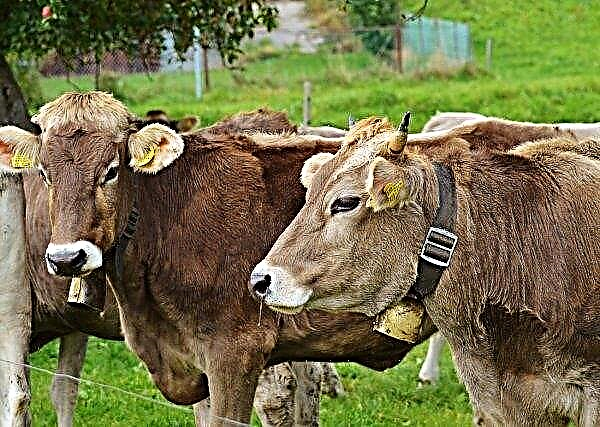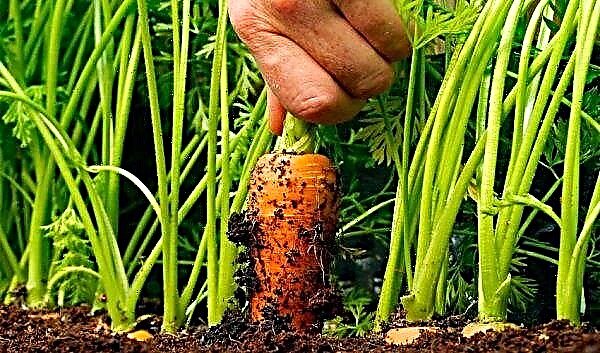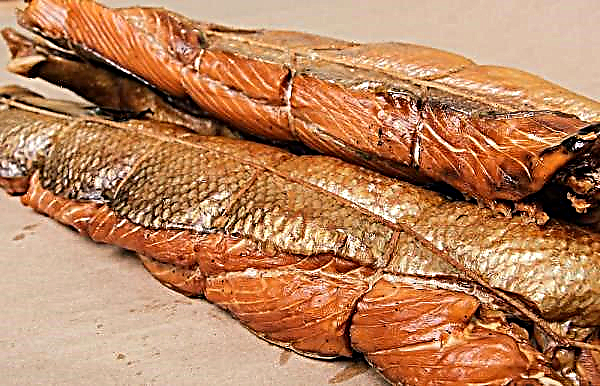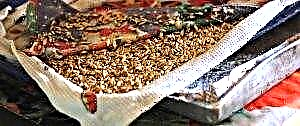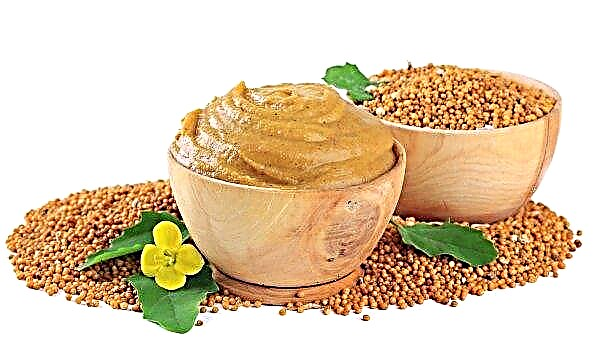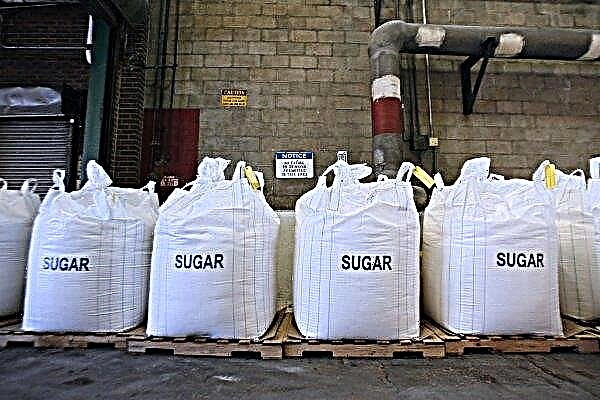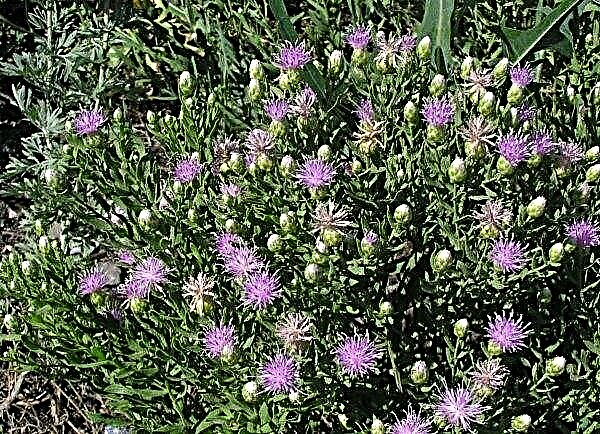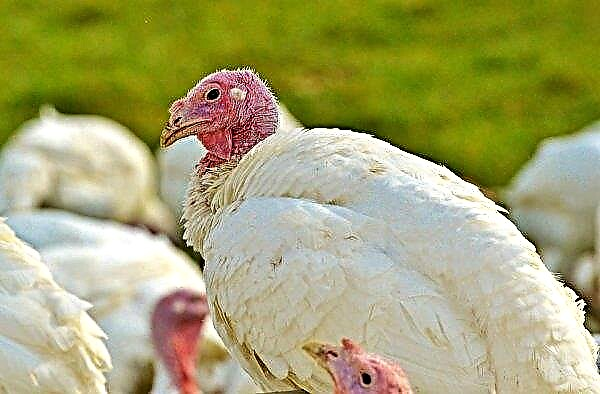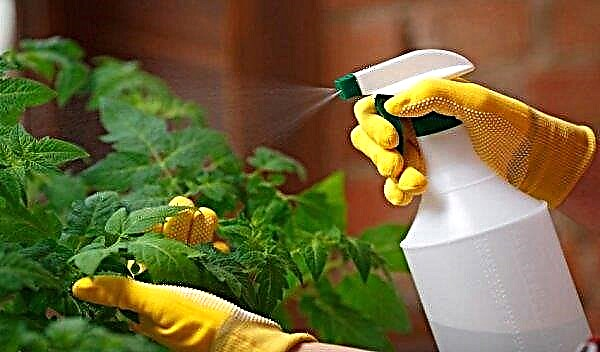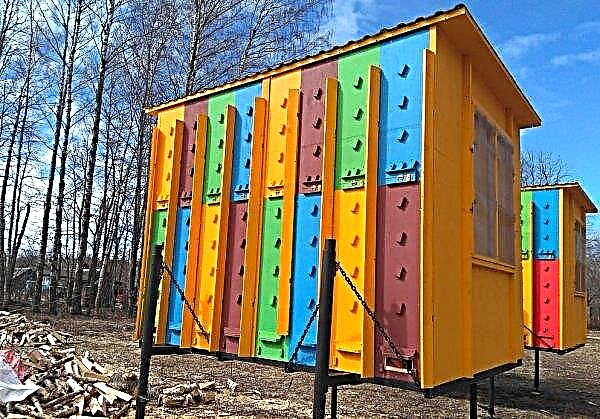For a long time, one of the most popular indoor cultures is considered tradescantia. Despite its beauty, many are afraid of this plant, since they believe that the rheo flower can do harm. Let's get to know him better in the article, and also find out whether he is poisonous or not.
Botanical description of the plant
Tradescantia, or rheo (variegated, vesicular) belongs to the Kommelinov family and is a decorative foliage flower with purple leaves. In the natural environment, the plant grows in subtropical zones in Mexico and Florida.
The flower is a herbaceous perennial with a height of not more than 40 cm. Its root system is horizontal, small in size. The stems are almost invisible due to their shortening, but they are quite thick and erect. The leaves grow quite densely, forming a rosette-like pattern on top of the trunk. They are large in size, lanceolate in shape, with a sharp end - all this gives the flower a beautiful silhouette.
Reo is distinguished by the color of the leaves: the upper strip has a bluish-green strip, and the reverse strip has a purple color. In addition, the difference is the density of the leaves, due to which moisture accumulates, which allows you to transfer dry time. Smooth leaf surface gives added decorative effect.
Blooming in reo is inconspicuous: small white flowers are located under the bracts. The flowering period can last almost the whole year. Tradescantia is grown singly or in complex compositions with other plants.
Did you know? Leaf juice is endowed with poison. It is used in Mexican folk medicine as a remedy for respiratory diseases or gum bleeding.
Prerequisites and proper care
Indoor plant reo is unpretentious in growing. However, the greatest beauty can be obtained only with proper care, which includes the following aspects.
Seat selection
Despite the bright color of the leaves, there is no requirement for lighting in the plant. For full growth, a flower is enough to receive light in the morning and evening. In the room, the pots are placed on the windowsills of the eastern or western windows.

Temperature and humidity
Tradescantia is a thermophilic flower that is quite sensitive to temperature extremes: the optimal indicator in the warm season should be within + 20 ... + 23 ° С. The lower limit of permissible cooling is + 13 ° C, but it is better if it does not fall below + 18 ° C. In summer, it is recommended not only to take out the pots in fresh air, but you can even transplant the plant into the open ground. However, you need to choose a place where there are no drafts.
To fully reveal the decorative color, it is recommended to monitor the humidity. This is especially true in the summer and during the heating season.
Important! Unlike other flowers, tradescantia cannot be sprayed. In this case, you can only increase humidity by placing it near a container of water.
Watering
Since the flower belongs to rapidly growing plants, it reacts negatively to drought. Watering should be carried out often, humidity should be constant, only the top layer of the earth can dry. In the warm season, watering is carried out every other day, in spring and autumn, the amount is reduced to 2 times a week, and in winter only after the top layer of the soil has completely dried.
The complexity of the irrigation procedure is that the flower does not tolerate wet leaves. Water is introduced carefully along the edge of the pot - it should be warm, while standing and soft. Excess water is immediately removed from the pan.
Video: Care and maintenance of tradescantia
Top dressing
For active growth and beauty during the growing season, the flower needs additional fertilizer: they are applied during the period from March to August. The dosage should exactly repeat the one that is stated on the packaging of preparations for decorative crops. The frequency of such actions is every 10 days. With the advent of autumn, the amount is gradually reduced, and in winter, feeding is not carried out at all.
Pruning
To preserve the beauty of the bush, it is recommended immediately after flowering to get rid of inflorescences in order to prevent the formation of seeds. Since the plant blooms constantly, they always do this.
To stimulate the appearance of new lateral shoots, the tops of old stems are trimmed. Similar actions are carried out to obtain new planting material. All this will allow you to form a beautiful and dense foliage.
Did you know? A large number of superstitions are associated with the flower. It is believed that the one who first sees the flowers can make a wish that will surely come true.
Transfer
Reo is transplanted in the spring, during growth. Since the root growth occurs in the horizontal plane, for this, choose shallow pots, which are quite wide at the same time. A transplant is carried out only when the bush still retains its beauty, but no longer fits in the pot. When a plant has lost its beauty, it is simply divided into parts. The soil is selected from a substrate for decorative and deciduous crops. It is important not to forget about the drainage layer. The transplant is carried out in any way possible - the plant will react normally and within a short period of time will begin to grow again.
Propagation at home
Reo is a light plant for reproduction. This can be done both with the help of seeds and cuttings.
Reproduction by seeds is not difficult. To obtain new plants, the seeds are sown in the spring in a mixture of peat and sand. The container is covered with glass and kept at a temperature of + 20 ° C. After the emergence of seedlings, they are seated in separate containers.
However, most often they increase the number of plants under consideration by cuttings. For propagation, cut off the tops of the shoots or side shoots and place them in water with the addition of a growth activator. The lower leaves are removed. The flower quickly forms powerful roots and easily adapts to new capacities.Important! A spectacular appearance requires constant care: neatness is created by tearing off dry leaves and pinching too long shoots.
In addition, the flower can be propagated by dividing the bush: it is divided into 3 equal parts, while separating the side shoots and sending them to root. This is the most suitable way, as reo is constantly growing. To form the roots, the cuttings are kept at a temperature of + 18 ... + 21 ° C.

Possible growing difficulties
Despite the fact that Reo is rarely exposed to pest attacks and diseases, improper care can lead to some problems.
Let's consider them in more detail:
- Powdery mildew or gray rot removed by disposing of damaged parts and treating the plant with fungicides.
- Shield cleaned by washing the leaves with soap and water and treating with insecticides.

Consider what other problems may arise when growing a flower:
- Yellowing leaves - increase the amount of watering.
- Shredding leaves - increase the amount of light and balance nutrients.
- Burns - change of place.
- Cessation of flower growth - reduction in the amount of incoming moisture.
- Leaf tips dry - additional humidification.
- Leaf softness - increase in temperature.

